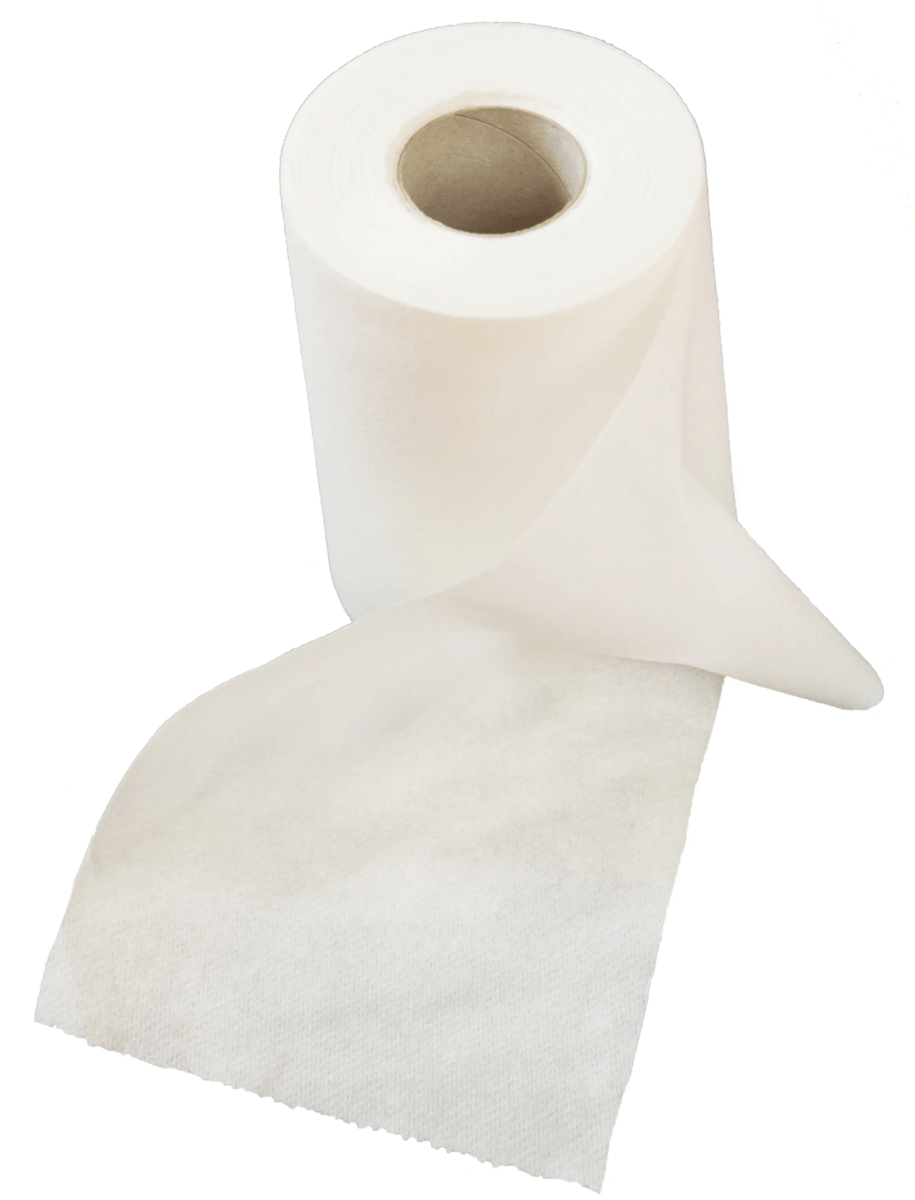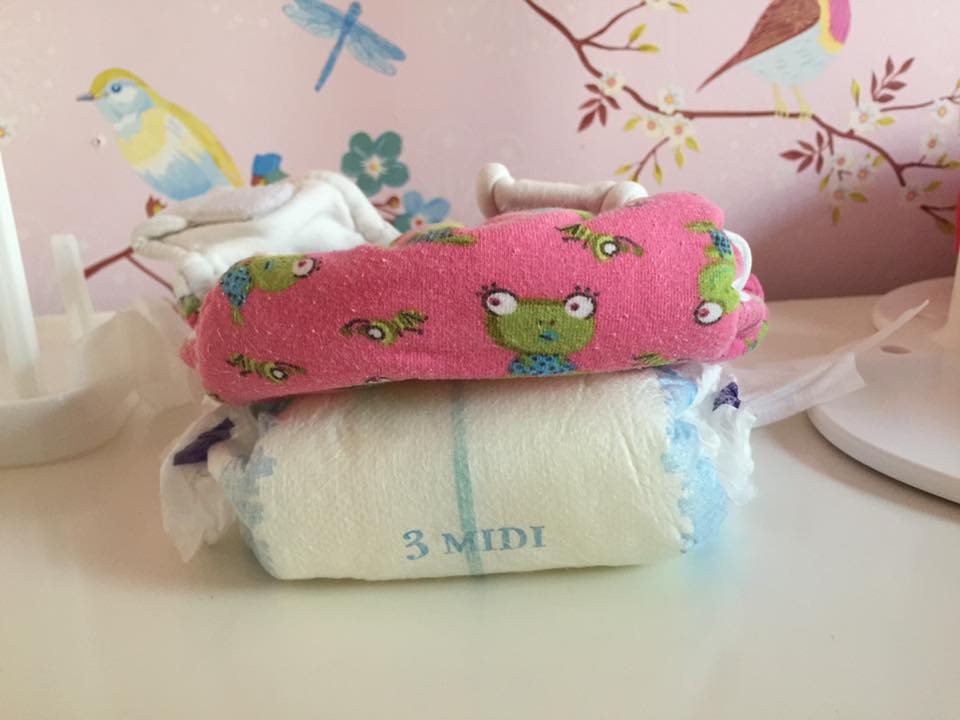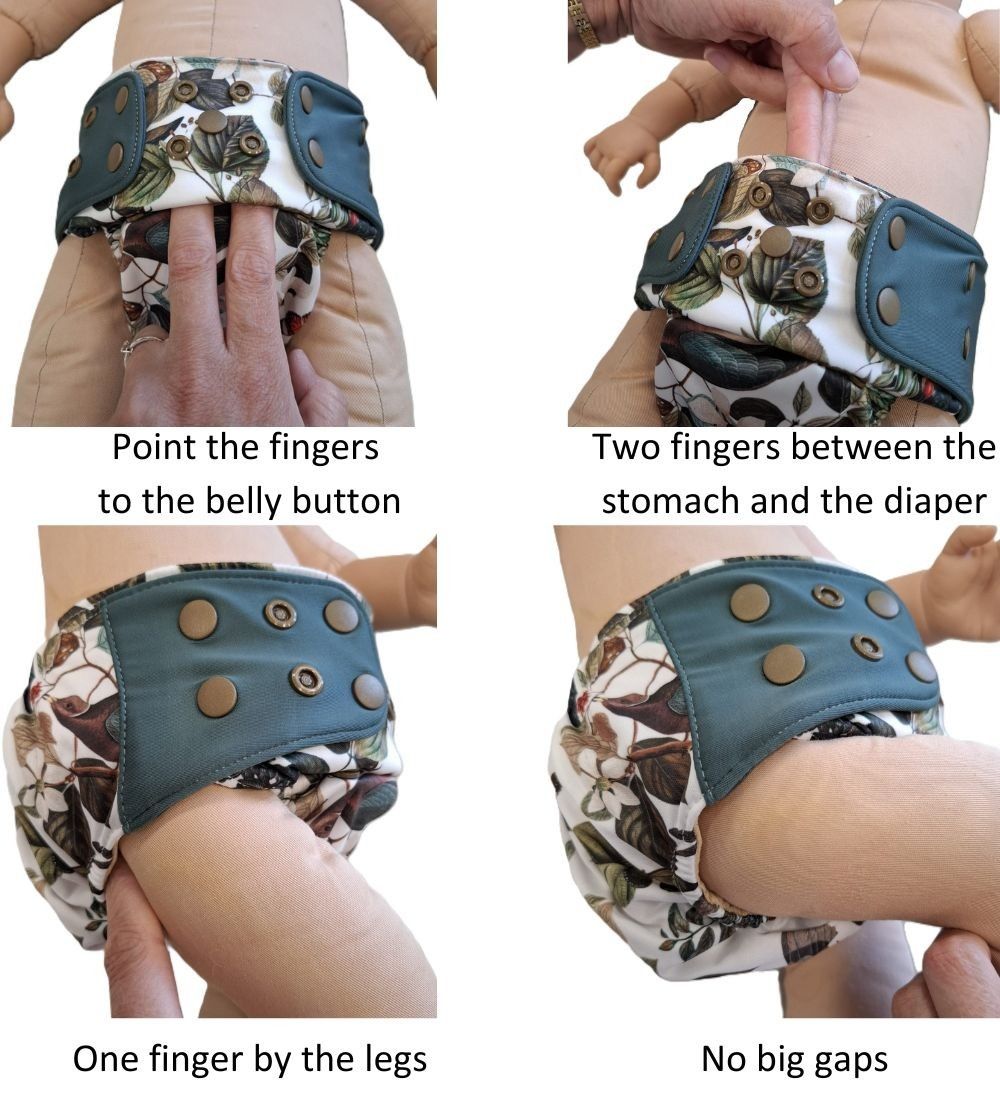How do reusable diapers work
Reusable diapers actually do not differ so much from disposable diapers. It catches pee and poop, keeps clothes clean and dry and has to be changed every so many hours. Only, you throw a disposable diaper in the bin, whereas a reusable diapers goes into a laundry basket. Nowadays, washing machines work exceptionally well, so they easily wash your diapers clean. But how does that work exactly, because nobody wants poop in their washing machine, right?
The construction of a reusable diaper
A reusable diaper generally consists of three parts:
- A liner
- An absorbent inside
- A waterproof outside
The liner

The liner is an important addition to your cloth diaper if you do not want any baby or toddler poop in your washing machine. A liner is a thin layer that you put on top of the diaper, closest to your child’s bottom. If your child poops, most of the stool ends up in the liner. When you change your child, you can remove the liner and throw it away, together with the poop. Just like you would with a disposable diaper. If you child has only peed, you can keep the liner in the diaper and wash it together with your diapers. Most liners, namely, can hold up well up to 5 to 10 times in the washing machine before they fall apart. That is one of the reason not to flush them down the toilet. They are generally biodegradable, but this process will take some time. Liners made of bamboo should not be washed, because they do not come out of the washing machine in a way that you can reuse them.
Apart from the above mentioned disposable liners, there are also washable, cloth liners. They are generally made of microfleece, charcoal-bamboo or silk. Cloth liners made of microfleece or charcoal-bamboo give a stay-dry feeling to your child’s skin, even when the diaper is wet. Because of the soft, slightly hairy surface, you can shake off any stool in the toilet easily. For thin or sticky stool, this is harder and needs scraping or holding it in the toilet to flush it out. Silk liners are very suitable for children with extremely sensitive skin. From this liner too, you can shake off the solid stool. The downside of the silk liners is that they need to be washed by hand.

A liner is not always needed or convenient. Young babies that are being breastfed produce such thin stool that a liner does not catch it. It will seep through and flow past the liner. Moreover, the stool is so runny (and natural) that the washing machine will flush it out in the first rinse round. If your child is being formula fed, the stool is usually a little thicker. Sometimes a liner does help, but not always. If the stool is seeping through it and does it get flushed out by the washing machine easily, then you can safely leave the liner out. Only when your child starts eating solids will you notice the stool change and you will have the need to use a liner.
A liner can also be used to protect the diaper against some ointments. Some greasy ointments and zinc ointments can create a film over the surface of the nappy, which causes the nappy to absorb less. Moreover, the ointments can leave stains on the nappy that can be hard to wash out. So if you are using zinc ointments (like Sudocrem), medicated ointments or very greasy ointments, we recommend using a liner too. More natural skin care products like the ones by Weleda or coconut oil are usually safe to use without a liner.
The absorbent inner
A reusable diaper is mainly made to catch liquid (and stool). This means that the nappy has to absorb well. In disposable diapers, they put super absorbent granules that turn into gel when they get wet.  These SAP granules (Super Absorbent Polymere) and some fluff-pulp form the absorbent part of the diaper. A disposable diaper becomes larger when more SAP grains have turned into gel. The absorbent core of a reuseable diaper, however, is mainly made of bamboo or (organic) cotton. Some diapers consist of hemp and microfiber, pure or combined with other materials. A reuseable diaper is thicker than a fresh disposable diaper, but it will keep the same volume when it gets wet. A soaked disposable diaper can be thicker than a soaked cloth diaper!
These SAP granules (Super Absorbent Polymere) and some fluff-pulp form the absorbent part of the diaper. A disposable diaper becomes larger when more SAP grains have turned into gel. The absorbent core of a reuseable diaper, however, is mainly made of bamboo or (organic) cotton. Some diapers consist of hemp and microfiber, pure or combined with other materials. A reuseable diaper is thicker than a fresh disposable diaper, but it will keep the same volume when it gets wet. A soaked disposable diaper can be thicker than a soaked cloth diaper!
The absorbent part of reuseable nappies is usually made of one or a combination of the following materials:
- Microfiber (polyester) is a quick absorber, but behaves a little bit like a sponge. It is prone to compression leaks. This material is sometimes used in boosters or as a core, covered with cotton or bamboo. It is only rarely used in a pure way for the entire diaper. Raw microfiber can cause skin irritation. Never use microfiber boosters or diapers straight to the skin.
- Cotton is also a relatively quick absorber and is, contrary to microfiber, a natural material. It holds onto liquid better than microfiber and is used frequently in cloth diapers. Organic cotton is used a lot too. That is why cloth diapers are sometimes also called cotton diapers.
- Bamboo absorbs a little slower than cotton, but holds the liquid even better. Together with cotton, bamboo is the most used material in cloth diapers. It remains softer than cotton after multiple washes.
- Hemp is the slowest absorber of the four. Also, the material tends to get stiff after a couple of washes. This is why hemp is usually combined with bamboo or cotton. However, hemp is the most absorbent of the materials when compared in size and thickness.
The waterproof outer
Put a pile of towels on the floor and pour water over it. The bottom towel will get wet no matter what, if you pour enough water on it. A reuseable diaper is also made of fabric entirely and is not waterproof by itself. The diaper needs a special layer to prevent clothes from getting wet. Disposable diapers also need such a layer, for that matter. For disposable diapers , polyethylene (PE), polypropylene (PP) or rubber is being used, whereas for reuseable nappies polyurethane laminate (PUL), thermoplastic polyurethane (TPU) or wool is being used.
- PUL stands for polyurethane laminate. This is made by laminating a thin layer of polyester with a thin layer of polyurethane, using solvents. PUL is sturdy, breathable, pliable and can be washed in the washing machine without problems.
- TPU stands for thermoplastic polyurethane. Here too, a thin layer of polyester is laminated with a thin layer of polyurethane. The difference with PUL is that with TPU, heat instead of solvents is used in this process. This makes the production process of TPU a little more eco-friendly than that of PUL. TPU is also a little more pliable, very breathable and washes well in the washing machine. It is a little bit more delicate than PUL.
- Wool is, in contrast to the above mentioned materials, a natural material. A wool cover over a cloth diaper works actually like a sheep in nature. A sheep can be in the rain for days on end without his skin getting wet. It is the grease on their skin that makes the wool water-repellent. This grease is called lanolin and we use it to treat our wool cover with. This makes the wool cover water-repellent and keeps your child’s clothing dry, even if the diaper is soaking wet. Also, wool is breathable and thermal regulating. Cool in summer and warm in winter. Wool covers are also self-cleaning and only need to be washed and lanolized every few weeks.
Changing a reusable diaper
Changing a reuseable cloth diaper is not so much different than changing a disposable diaper. Especially when you have prepared your reuseable nappies so they are ready to go. You can just get a diaper, put in a liner if needed, and put it on your child. For a proper fit, make sure that you can put two fingers on top of each other between the diaper and your child’s belly. Around the legs, you need to be able to stick one finger between the diaper and the skin with ease. Mind that a too tight diaper leaks sooner than a looser diaper, because a tight diaper squeezes the liquid out.
A large part of reuseable diapers can be adjusted in size by means of snaps at the front. The advantage of this is that the cloth diaper grows with your child, so you can use it for a long time. Make sure that when snapped in, the front flap is facing upwards. You need to be able to stick your fingers in from the bottom upwards, so your fingers point to your child’s belly button. This creates a better fit around the legs. If there are three rows of snaps, you could leave the middle one open. It makes the diaper smaller, but it creates extra room for pee and decreases the chances of leakage. Finally, you need to make sure that there is no absorbent material or a bit of liner sticking out of the nappy. These get wet and if it gets out of the waterproof shell of the nappy, the clothes will get wet too.
There are several different cloth diaper systems around that all work slightly differently. An all-in-one diaper, for example, looks a whole lot like a disposable diaper, whereas with the two-part system, you first put on the absorbent inner diaper and then wrap a cover around it.
A poop diaper or a pee diaper?
If your child has pooped, you take out the liner from the cloth diaper and throw it away, like you would a disposable diaper. The cloth diaper can be stored in the diaper pail, until laundry day. It can happen that the hem of the diaper have got a little soiled, but the washing machine can clean this easily. Rinsing or scraping it out is unnecessary. When your child has only peed, things are even easier. You throw the reuseable diapers, including the liner, in the diaper bin.
There should be a mesh laundry bag or a pail liner in your diaper pail. When the nappy bucket is filled up, you take the mesh laundry bag or bucket liner out of the bin and shake it out in the washing machine. So you do not even have to touch the dirty diapers anymore! The washing machine will rinse everything out and will clean your cloth diapers thoroughly after that, at 60 degrees Celsius. This makes your reusable diapers all fresh and clean, and ready to go when they are dry. A more extensive explanation about washing can be found on our page with laundry advice.
Reusable diapers on the go
You can use reusable diapers on the go easily. The only difference with your situation at home, is that you cannot drop the dirty diapers in the nappy bucket, but that you have to keep it somewhere else. For this purpose, we carry many beautiful wetbags. Some wetbags have two pockets, one for dirty diapers and one for clean diapers. But you can also put your clean diapers simply in your diaper bag, of course, and only put the dirty diapers in the wet bag. When you get home, you simply put the wet bag, opened up, in the nappy bucket. It will be washed with your diapers as soon as it is laundry day again. Do not forget to take out the poopy liner, if you had brought that home with you in the cloth diaper.
Apart from taking a wet bag with you, it makes sense to bring some liners and, of course, wipes. You can opt to bring disposable wipes or cloth wipes. The latter can be taken with you dry and be made wet on the spot, or you can take them with you wet in a small, waterproof box. To be able to change quickly on the go, it helps to bring the reusable cloth diapers in a ready to go state, maybe even with the liner already inside. Finally, you can also bring a changing mat to change your child on.
